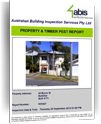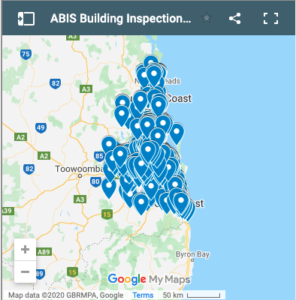From 1 December 2010, new pool safety laws for new and existing pools will replace existing local government laws and all exemptions (apart from disability) will be abolished. There is now one pool safety standard, the Queensland Development Code Mandatory Part 3.4 that replaces 11 different pool safety standards.
Stage 1 commenced on 1 December 2009 and applied to new residential pools
Stage 2 commences on 1 December 2010 and affects existing swimming pools
Under the New Swimming Pool Safety Laws
- a Pool Safety Certificate issued by a Pool Safety Inspector is required when selling, buying or leasing a property with a pool
- Pool Safety Certificates are valid for 1 year for a shared pool and 2 years for a non-shared pool
- the pool safety standards apply to all pools associated with houses, townhouses, units, unit complexes, hotels, motels, hostels, caravan parks, mobile van parks, backpacker accommodation, and other forms of short-term accommodation
- both new and existing pools must be upgraded to comply with new safety standards within 5 years or earlier if sold or leased before then
- all swimming pools need to be on the Pool Safety Register by 4 Nov 2011
- safety barriers are mandatory for all portable pools and spas deeper than 300 mm
Portable Pools & Spas Excluded From the New Laws
- cannot be filled with more than 300mm of water
- have a maximum volume of 2000 liters
- have no filtration system
All 3 criteria must be met to be excluded.
Portable Pools & Spas Covered By the New Laws Need
- a certificate from a licensed building certifier stating that it complies with the pool safety standard before filling the pool or spa with more than 300mm of water
- a building approval
- to be registered on the Pool Safety Register by 4 Nov 2011
- alternatively, the portable pool or spa can be removed
If a portable pool is disassembled and does not hold more than 300mm of water, it does not need to comply with the pool safety standard until it is assembled and filled with more than 300mm of water.
When the New Pool Safety Standard Has to Be Met
Existing pool owners have until 30 November 2015 to comply with new pool safety standards or earlier if their property is sold or leased before then.
Non-Shared Pools: Buying, Selling or Leasing
If you are selling a property with a non-shared pool before the 5 year phase-in, such as pools for houses or townhouses or units with their own pool or spa:
- a Pool Safety Certificate must be obtained before settlement of a contract; or
- a Notice of No Pool Safety certificate Form 36 must be issued before entering into a contract of sale and before settlement advising the buyer that a certificate must be obtained from a licensed Pool Safety Inspector within 90 days of settlement. The buyer is liable for any costs associated with achieving compliance, unless otherwise negotiated as part of the contract.
If there is still no Pool Safety Certificate in effect before settlement and the seller has already given the Notice of No Pool Safety Certificate Form 36 to the buyer, then they do not need to give the buyer a new form unless the information required by the form changes between contract and settlement. However, the seller also needs to give the Notice of No Pool Safety Certificate Form 36 to the Pool Safety Council.
If you are leasing your property, a Pool Safety Certificate must be obtained before entering into the lease.
Shared Pools: Buying, Selling or Leasing
For shared pools, such as a Body Corporate pool in a unit complex, if there is no Pool Safety Certificate in effect, a Notice of No Pool Safety Certificate Form 36 must be given to the pool owner (e.g. Body Corporate), the Pool Safety Council and, except for short-term accommodation, the occupant (the tenant).
If you are selling or entering into an accommodation agreement (e.g. lease, hotel stay etc) for a property with a shared pool associated with short-term accommodation such as hotels, motels, backpacker or hostels, a Pool Safety Certificate was required by 31st May 2011.
If you are selling or entering into an accommodation agreement for units and townhouses with a shared pool or spa, a Pool Safety Certificate is required by 30th November 2012.
CPR Signs
New pool safety laws require the latest prescribed cardiopulmonary resuscitation (CPR) sign adopted by the Australian Resuscitation Council to be displayed near each pool by 30 November 2015, or earlier if the property is sold or leased first.
From 1 October 2003, pool owners have been required to display a complying CPR sign. Since the introduction of Stage 1 in December 2009, all new pools have been required to display the latest prescribed CPR sign.
The CPR Sign Must
- be attached to the safety barrier for the pool or displayed near the pool so that the sign is easily visible to a person near the pool
- be at least 300mm by 300mm in size
- be made of durable and weatherproof material
- include a statement that is prominent on the sign, explaining to a person reading the sign how to act in an emergency, including telephoning for an ambulance, staying with the injured person, calling for help, and providing first aid
Warning Signs
Signs to warn the public that a swimming pool is under construction must also be displayed. This requirement does not apply to portable pools.
The Warning Sign Must
- warn members of the public in the vicinity of the land that a swimming pool is under construction on the land and there is potential danger to young children accessing the land (e.g. “Danger. Swimming pool under construction. Keep Children out”)
- be placed on, or within, 1.5 metres of the road frontage for the land
- be mounted so that the bottom of the sign is at least 300mm above the ground
- be positioned so that it is visible from the road
- be made of weatherproof material
- have lettering on the sign that relates to the warning must be at least 50mm in height and in bold style
- if the land has more than one road frontage, a warning sign is only required on one road frontage
Pool Safety Inspectors
Under the Building Act 1975, a person who performs pool safety inspection functions must be licensed by the Pool Safety Council as a Pool Safety Inspector.
Licensing as a Pool Safety Inspector requires a certificate of competency from an eligible course provider, successful completion of the state government’s pool safety inspector test and possession of the required professional indemnity insurance.
Pool Safety Inspection System
Pool Safety Inspectors inspect pools to determine whether or not they comply with the pool safety standards. Upon inspection, the Inspector must issue a Pool Safety Certificate or Nonconformity Notice, depending on the outcome of the inspection. This Nonconformity Notice must state how the pool doesn’t comply and what needs to be done to make it comply.
Pool Safety Certificates are valid
- 1 year for a shared pool
- 2 years for a non-shared pool
Pool Safety Inspectors can only issue a certificate when they have placed the certificate details onto the pool safety register which will be available to the public for scrutiny. All properties with regulated pools need to be included in the state-based pool safety register by 4 Nov 2011. Initially, Local Governments will include details of pools on the register. However, pool owners will need to check the register to ensure their pool is registered.
Pool Fences & Safety Barriers
Pool owners are responsible for ensuring pool barriers are maintained and damaged fencing or barriers are fixed immediately.
Pool Fences & Safety Barriers Commonly Fail Because
- the gates are not self-closing and self-latching from all points
- the height of the pool safety barrier is less than 1200 millimetres because ground levels and garden beds have increased or grown over time and have, therefore, reduced the height of the pool barrier
- the adjoining boundary fences have climbable rails
- the windows opening into the pool enclosure are openable with more than a 100 millimetre gap
- there are climbable objects near the pool safety barrier
To Ensure Your Pool Safety Barrier Or Fence Complies
- replace, tighten or adjust the hinges on your gates
- make sure the pool safety barrier height is 1200 millimetres from bottom to top
- trim back any vegetation or branches that a child could use to climb over the pool safety barrier
- remove climbable objects within 900 millimetres of the pool safety barrier
- install permanently fixed security screens on windows that open into the pool enclosure
Replacing Damaged, Demolished or Removed Portions of a Fence or Barrier
If a substantial portion of a pool fence or barrier is damaged, demolished or removed, it must be replaced with a new pool safety barrier. The new safety barrier must comply with the current standard.
If a small part of the safety barrier has fallen into a state of disrepair, for example where palings, hinges or latches need to be replaced, the barrier may be repaired to the same standard that applies to the existing pool safety barrier up until the end of the five year phase-in to comply with the new pool safety standard, unless the property is sold or leased earlier.
Certain work for pool safety barriers, such as an entire new fence, requires a building development approval from either the Local Government or a private building certifier before the work can begin. A building development approval is generally not required for minor work, such as adjusting a gate latch, however minor work must still comply with the pool safety standard.
Responsibilities
Owners of Swimming Pools
The pool owner is generally the owner of the land. The owner of the property is responsible for ensuring their pool safety barrier is compliant.
Tenant Renting Property with a Swimming Pool
Tenants are responsible for ensuring that the gate is kept closed and that there are not any objects that would allow children to access the pool.
If a person renting a property buys a pool that requires pool safety barriers, the owner of the pool must ensure the pool has a compliant pool safety barrier.
New Swimming Pools
All new swimming pools require a building development approval.
For new swimming pools:
- mandatory follow-up inspections are required to be undertaken if the final inspection has not been done. Building certifiers are required to undertake a mandatory follow-up inspection within a set time frame after giving a building approval for a swimming pool. The time frames are 6 months for new pools or 2 years in cases where building approval is granted for a swimming pool and a new building. If the building approval is due to lapse earlier than 6 months or 2 years, the final inspection must be done before it lapses.
- compliant temporary fences are permitted for a maximum period of 3 months during the construction of a pool. After this time, compliant permanent barriers are required. Both the temporary and permanent fences will need to be inspected and certified by the building certifier who approved the application.
The building certifier, either a private building certifier or a Local Government building certifier, who approved the building approval must inspect and certify the pool safety barrier before the pool is filled to a depth of 300 millimetres or more.
Applicable Legislation and Standards
The following legislative requirements are relevant to swimming pools constructed on or after 1 December 2009:
- Building Act 1975
- Building Regulation 2006
- Building and Other Legislation Amendment Regulation (No.3) 2009
- Queensland Development Code MP 3.4 Swimming Pool Barriers
- AS 1926.1 – 2007: Swimming pool safety – Part 1: Safety barriers for swimming pools
- AS 1926.2 – 2007: Swimming pool safety – Part 2: Location of safety barriers for private swimming pools




